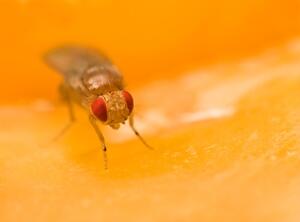
LSTM Seminar Series continued this week with a presentation by Dr Joerg T Albert, Senior Lecturer in Neuroscience, at University College London’s Ear Institute. His seminar “Time, love and disease: Sensory ecology and molecular basis of insect mechanosensation” was introduced by LSTM’s Dr Gareth Lycett.
Dr Albert introduced his seminar by explaining that there was a time for everything and that there is a rhythmic nature to existence driven by the circadian clock. In terms of the circadian clock, what we have learned from the insect world has been invaluable. The research of Dr Albert’s lab has focussed mainly on the Drosophila melanogaster or fruit fly; he explained that there is even a time pattern for eclosing, which is not distributed evenly throughout the day. If eclosure is prevented at the optimum time by external sources, it is likely that it would not occur until about the same time the following day.
He described the work of Dr Ron Konopka, who in 1971 looked at Drosophila mutations that affected the clock, all of which were period gene mutations. His own work, carried out in collaboration with Prof Ralf Stanewsky found in 2009 that the chordotonal organs were required for the temperature entrainment of the Drosophila circadian clock. This was an unusual find given that the chordotonal organs and genes are in fact force sensors or mechanosensors. They put together an experiment to measure the change in clock in response to external vibratory stimulus. It found that the vibrational entrainment didn’t work on mutants missing chordotonal organs or genes, or without the period gene, proving that these are the mechanisms by which external stimulation is fed to circadian clock.
He went on to look at how the internal ear of the Drosophila is stimulated by the external world, by a process of mechanotransduction. This is where an external stimulus exerts force on the receptor within the ear, causing movement which in turn causes ion channels to open and sound to be received. Dr Albert then explained the sensory ecology of the ear and what the Drosophila actually hears. The male drosophila will use sound to attract a mate and each species “sings” at a different frequency, the ear of females in the same species being perfectly adapted to hear that particular frequency.
Finally he described work being carried out in his lab to identify mechanosensory pathways as a potential target for vector control in Malaria. He described initial experiments in which insecticide had been developed which targeted the chordotonal organs and mechanosensory systems, not only preventing the insect from feeding, but also affecting other behaviours including ability to mate. This work, if successful, could clearly have impact on future disease control strategies.